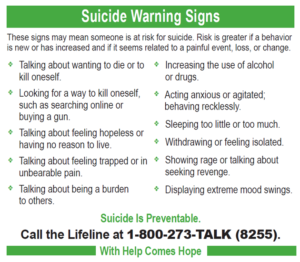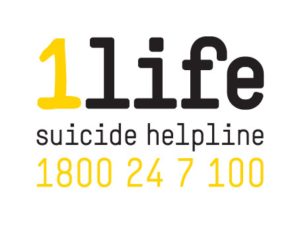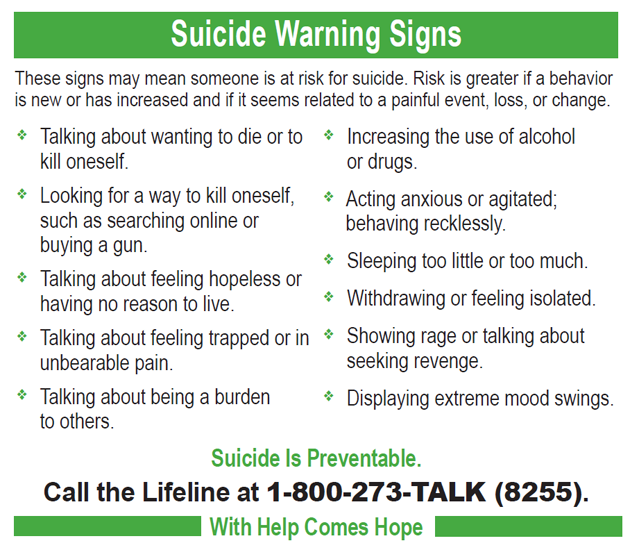
One of the most famous examples of “suicide contagion” is that of Romeo and Juliet.
In Shakespeare’s play, the lovers from embattled families plan a secret marriage. Juliet, in her efforts to take leave of her family, fakes her own death hoping to meet with Romeo in her mausoleum. Romeo, unaware of the plan and finding his love apparently dead, takes his own life, swallowing poison just as Juliet awakes. Juliet then stabs herself to death.
In the aftermath, the warring families come together in their grief, and dying for one’s “true love” became a symbol of great romance.
In real life, however, most of those who attempt to commit suicide show signs well in advance that indicate a proclivity to such an act; however, many, including the Entertainment Industries Council, assert that such depictions in fictional works, film, television and news media can glamorize the act to such an extent that one so inclined can be induced to follow through.
According to the EIC, the National Center for Health Statistics recently reported that suicide rates may be rising “due to our nation’s previous [economic] recession, more drug addiction, the rise of social media cyber bullying, [available] internet ‘how-to’ information, and social isolation.”
“There is a desperate need for a broad-based, constant and consistent vigilance to promote suicide prevention resources,” the EIC says, encouraging writers, producers, reporters and other media to be more responsible in promoting available help and in encouraging consumers of their products to seek such help.
“Experts agree that gun locks, bridge safety nets and barriers, and safely-secured medications have prevented impetuous acts,” they say, “however, there is a desperate need to continue to decrease people’s feelings of hopelessness.”
The EIC collaborated with the Substance Abuse and Mental Health Services Administration’s Center for Mental Health Services (SAMHSA, CMHS) and the National Institute of Health’s Institute of Mental Health (NIH, NIMH), to co-sponsored a forum titled “Picture This: Depression and Suicide Prevention,” for mental health experts, persons who live with depression and for survivors of attempted or completed suicide, to “determine priorities for writers, directors, and producers.”
According to research, the number of suicides among readers or viewers increases not only as suicides are reported, but also tend to increase in proportion to the number of repeated reports or the amount of dramatic significance given to such deaths.
“Romanticizing suicide, or idealizing those who take their own lives, [that is, depicting them as] a noble warrior or ritual suicide, may encourage others to identify with the victim,” as will presenting the act as “inexplicable,” the EIC reports. “Dramatizing the impact of suicide through the depiction of grieving relatives, teachers and classmates, or community expressions of grief, may encourage potential victims to see suicide as a way of getting attention, or as a form of retaliation.”
In a study of adolescents conducted by University of Memphis researchers Anna S. Mueller and Seth Abrutyn, the risk of such “copycat” suicides, or suicide attempts, increases greatly when a friend tells them of their own attempt, or takes their own life. This direct connection is amplified by the expanding use of social media in place of face-to-face communication.
“Exposure to a friend’s suicide attempt or death appears to transform the distant idea of suicide into something very real: a meaningful, tangible cultural script that youth may follow to cope with distress,” Mueller and Abrutyn say. “Adolescents who know about a friend’s suicide attempt are nearly twice as likely to attempt suicide one year later. Youth who lose a friend to suicide are at an even higher risk. Interestingly, adolescents whose friends didn’t tell them about their suicide attempts didn’t experience a significant increase in their risk of suicide one year later.”
The death of a celebrity is more likely to produce imitation among the general population, however, says the EIC, and “although most suicides by celebrities will receive attention, it is important not to let the glamour of the individual take precedence over any mental health or drug use problems.”
Television, film. books and news media can present such information in ways which minimize the risk of “suicide contagion,” the EIC says.
“The risk can be minimized by factual and concise depictions of suicide, [without] prolonged exposure to details about suicide [which] may increase the perceived appeal,” the expert panel recommends. “Making sure to detail the complex feeling involved in suicidal behavior and suicidal thoughts will reduce the likelihood that any [consumer] will interpret suicide as an effective solution to a temporary problem.”
In fiction, such as books or television shows, the EIC recommends authors consider whether the act is crucial to the story line, not a spontaneous act which is not “in character” with the character. Suicide, they say, “is most often a fatal complication of different types of mental illness, many of which are treatable.”
“The greatest humanity comes through characters who live through pain. Depicting a suicidal act as the climax of the story lie doesn’t tell the whole story,” the EIC notes. “What happens after a suicide attempt is more emotionally resonant than events leading to it.”
The EIC also recommends incorporating actual resources as information characters can have access to, so consumers may also access the same resources to save themselves,
Entertainers and media should prioritize numerous factors, primarily the information that suicide is preventable, and factors which lead one to consider taking one’s own life are generally treatable so that recovery is possible. Suicide victims and survivors come from any age group, occupation, ethnic group or economic background. Some groups are more likely to be at heightened risk of depression, such as the elderly, and many groups place a cultural stigma on seeking treatment for mental health issues which could possibly be reduced through positive depictions of therapeutic successes.
Media should also consider showing the consequences of suicide or attempted suicide.
“The effects of a suicide or suicide attempt do not end with one person’s life,” they say. “When someone attempts or completes a suicide, his or her death or near-death compounds the normal loss that loved ones feel. Suicidal behaviors involve guilt, shame, fear and other mental stresses and can result in Post-Traumatic Stress Disorder (PTSD).” These effects can add to, or create, a “legacy” of suicide in a kind of “domino effect.”
Another area in which media can provide a service for those who might be considering suicide is in creating an awareness in those around them about the warning signs for suicidal behaviors, as well as emphasizing the importance of encouraging the relative or friend to seek help in finding a better solution. If connections to resources are included, the information becomes more invaluable.
EIC also emphasizes that while media does not solely hold the responsibility for suicide prevention, books, television shows, movies and news sources can create an awareness which lessens the likelihood, and provides hope for successful recovery.
For mental health services for those over 18, Allegheny County’s Department of Health and Human Services maintains a website at alleghenycounty.us/Human-Services/Programs-Services/Disabilities/Mental-Health/Services-For-Adults.aspx. For those under 18, visit alleghenycounty.us/Human-Services/Programs-Services/Disabilities/Mental-Health/Services-For-Persons-Under-18.aspx. As with any other health condition, in case of emergency, dial 9-1-1 immediately.
By Nancy Hart
Twitter: @nhart543




































